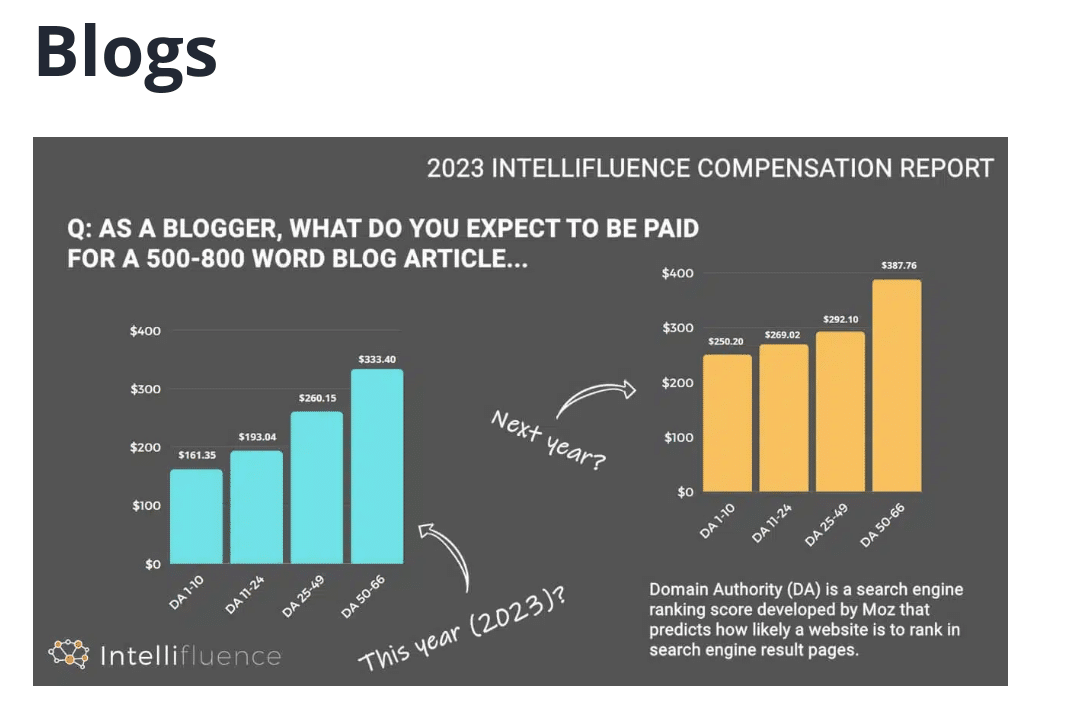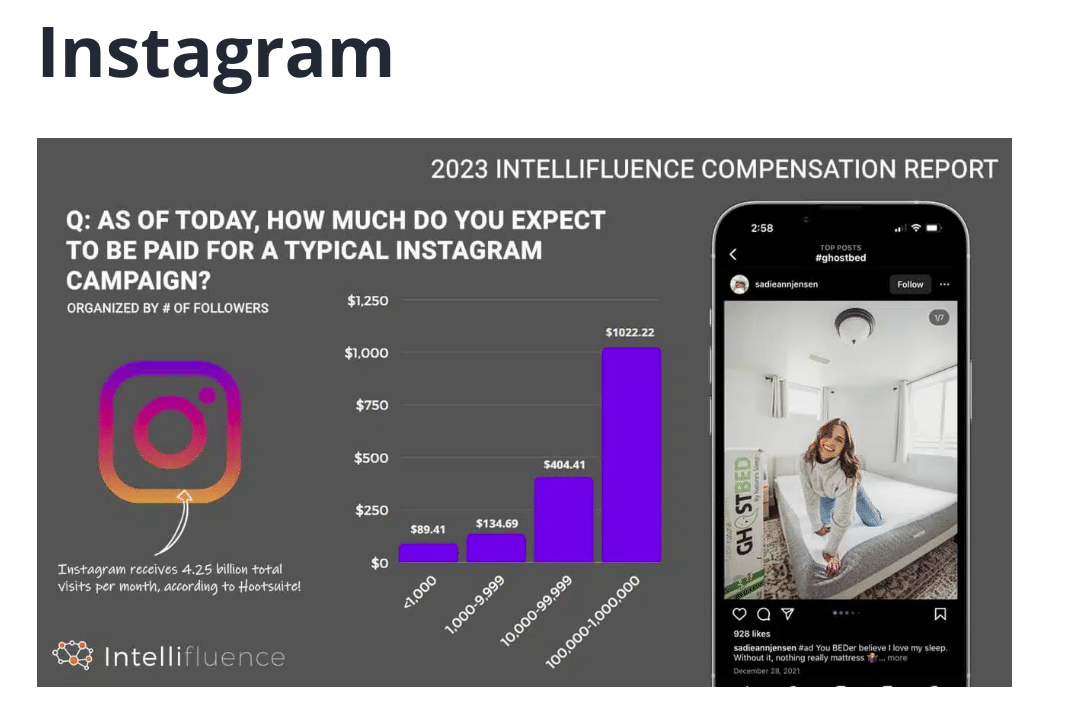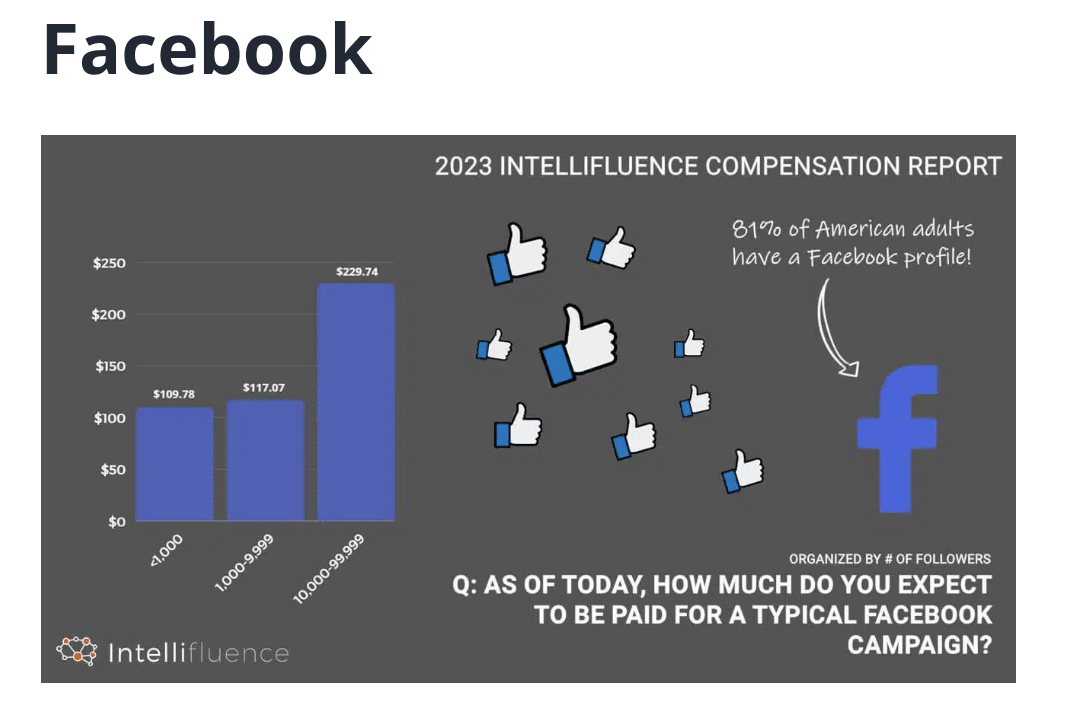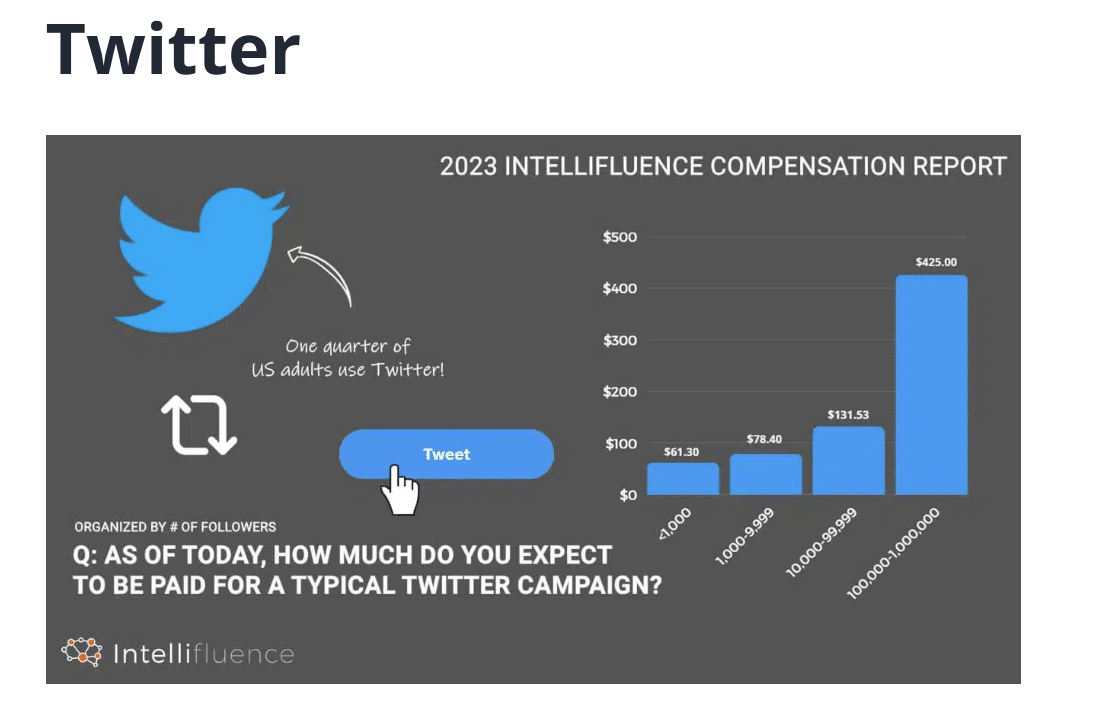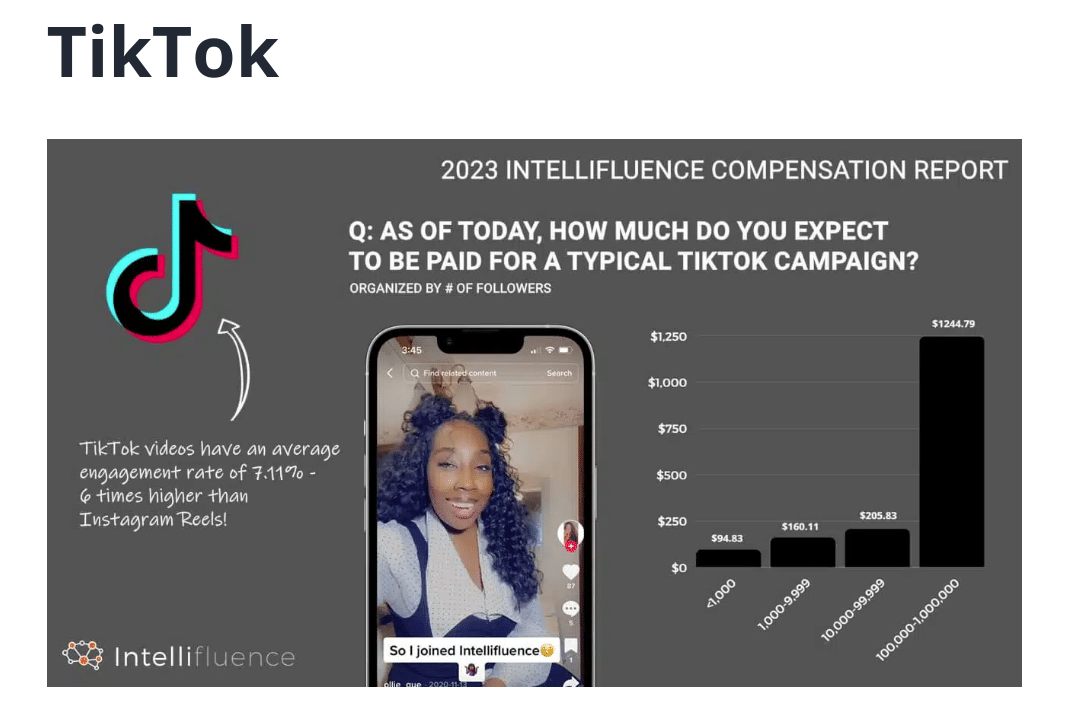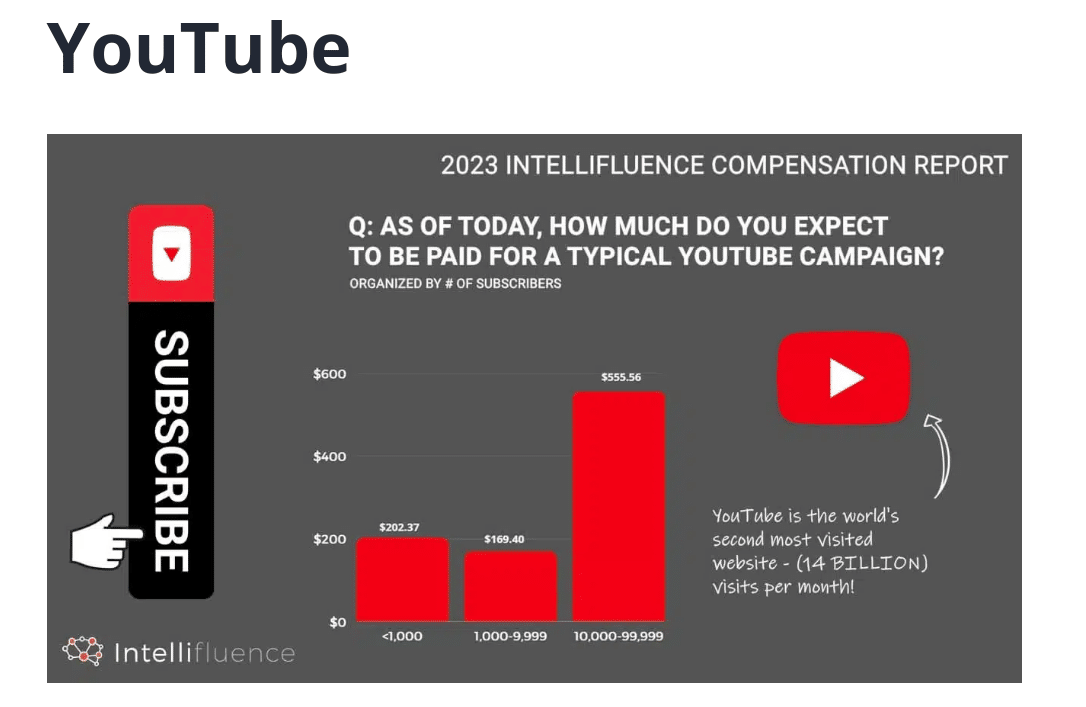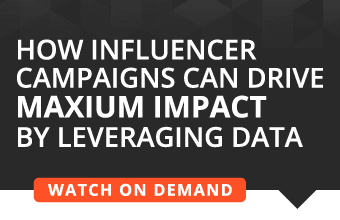How is today’s shaky economy impacting the going rates for brands working with influencers? New research from warm contact influencer network Intellifluence takes a deep dive into the industry, breaking down rates based on social network, number of followers, and other metrics.
The firm’s 2023 Influencer Compensation study comes on the heels of its 2021 report. “A lot has happened in the past two years, so we felt the timing was right to look at the data again,” said Joe Sinkwitz, CEO and co-founder of Intellifluence, in a news release. “In 2021, when the initial survey was conducted, we were a bit surprised to see how compensation stopped following a linear path after a certain audience size, suggesting a shift in the supply and demand curve for celebrity type influence. That curve helped to explain why larger accounts are able to charge significantly more than the standard $0.01-0.2 per follower rate that still pervades the industry.”
“I want to be clear that we’re still seeing that behavior. However, due to a change in how we approached the questioning and our ability to compare actual transaction data with surveyed results on an individualized basis, we were able to access information that no other network seems to have been able to assess,” he clarified.
“The psychology of smaller, peer-level influencers seems to suggest a disconnect between the perceived possible earnings of lower tier aspirational influencers (i.e., 1million audience size) and the actuality of earnings power derived from the rates charged by those influencers whom have reached over 1million in audience size,” said Sinkwitz. “In other words, there appears to be a belief, which was apparent across social networks surveyed, that the earnings which will become available once attaining 1million followers are significantly higher than the reality of what those at such a level are currently charging.”
“There are some other important economic lessons currently playing out that need to be discussed,” Sinkwitz continued. “No matter what the stated rates were in the survey responses, regardless of influencer audience size, we found that over the past 12 months, influencers were habitually accepting pitches beneath their listed minimums. This could be attributed to a variety of factors, but appears to be of the economic stress variety as influencers are willing to make the trade for cash-in-hand rather than have a productivity hit while waiting for pitches that may not come at the rates they desire.”
“Over the long arc, we do believe overall rates will continue to rise due to inflationary factors and increased demand for influencer services as a whole—however the industry needs to be aware that influencer compensation is more fluid and cash flow driven than it is a set rate. In times of excess, demand rates will spike, and deservedly so for hardworking creators—in times of marketing budget constraints, however, these rates will temporarily drop as a loss in billable hours cannot be recovered,” he added.
“It would be wise for the industry to pay closer attention to [rate fluctuation], especially if the US and global recession estimates turn out to be accurate. Regardless of how the rates change throughout 2023, we’ll continue helping our influencers keep 100 percent of what they agree to charge brands,” he concluded.
The report contains the results of a compensation questionnaire sent out to our Influencers based in the United States, Canada and United Kingdom towards the end of 2022. 1,700 Influencers completed the questionnaire.


